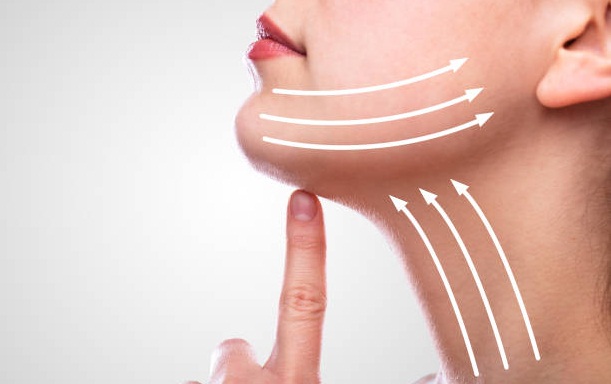SKIN CARE
There was a time when “facelift” meant surgical scars, tight bandages, and weeks of downtime. But today, the world of aesthetics has evolved—quietly, gracefully, and scientifically. The era of non-invasive facelifting has arrived, offering real results without the knife. From celebrities to everyday professionals, more people are embracing minimally invasive treatments that rebuild collagen, tighten skin, and restore youthful contours. But what’s the science behind these treatments—and who should you trust to perform them?
MNRF: Microneedling Meets Technology: “Collagen Creation from the Inside Out”
MNRF—short for Microneedling Radiofrequency—has emerged as one of the most sought-after treatments for lifting and tightening. The procedure combines two powerful technologies: micro-needles, which create controlled micro-injuries in the skin, and radiofrequency energy, which heats the deeper dermis to stimulate robust collagen and elastin production.
Each session takes about 30–45 minutes. After numbing cream is applied, the MNRF device is used to deliver energy into the dermis through gold-plated needles. The tiny injuries stimulate the skin’s natural repair response. Over 4–6 weeks, new collagen forms—firming loose skin, reducing open pores, and improving texture.
For visible lifting, most patients need 6–7 sessions spaced a month apart. The procedure is safe for Indian skin, with minimal risk of pigmentation. It’s particularly effective for early jowls, sagging around the mouth, and under-eye creping.
HIFU: The Ultrasound Lift: “Lift Deep. Without a Cut”
HIFU—High-Intensity Focused Ultrasound—is the only non-invasive treatment that targets the SMAS layer (Superficial Musculoaponeurotic System), the same layer tightened during a surgical facelift. Using ultrasound waves, HIFU delivers thermal energy into deep skin layers without disturbing the surface.
Patients often describe a prickly warmth as the ultrasound beams work below the skin. The treatment encourages new collagen over the next 2–3 months, resulting in a gradual and natural lift. It’s ideal for double chin, nasolabial folds, and mild to moderate sagging. Just one session annually can maintain results in many cases, though some may need a follow-up after six months.
Thread Lift: The Instant Fix: “Lift Now, Stimulate Later”
If you’re looking for a more immediate lift without surgery, the Thread Lift may be your answer. Using PDO (polydioxanone) or PLA (poly-L-lactic acid) threads, doctors gently insert absorbable sutures under the skin to reposition sagging tissues.
The threads have barbs or cones that latch onto soft tissue and lift it mechanically. Over the next 3–6 months, these threads dissolve and stimulate collagen synthesis—giving a dual effect of instant contouring and long-term skin strengthening.
Commonly treated areas include jawline, eyebrows, mid-cheek, and neck. Results last 12–18 months and improve when combined with collagen boosters like MNRF or biostimulators.
Bio stimulators: The Slow Sculptors: “Volumize with Collagen, Not Fillers”
Unlike hyaluronic acid fillers that provide instant volume, biostimulators like Calcium Hydroxyapatite (CaHA) and Poly-L-lactic Acid (PLLA) work by triggering your body’s own collagen production.
Injected deep into areas with volume loss—such as temples, cheeks, or jawline—these materials act as scaffolds. Over 8–12 weeks, they help your skin rebuild its thickness and elasticity from within.
Results appear gradually and can last up to two years, offering a soft, natural enhancement.
Beyond the Face: Full-Spectrum Rejuvenation
Modern facelifting isn’t limited to the cheeks and jawline. The neck, under-chin area, and even arms or knees can benefit from MNRF, HIFU, or biostimulators. This holistic approach ensures natural-looking results that match across treated areas.
Patients are also combining these lifting treatments with skin-brightening procedures, laser toning, or chemical peels to tackle pigmentation and dullness—because youth isn’t just about lifted skin, but radiant skin too.
The Menace of Underqualified Centers: “Don’t Let Your Face Be a Training Ground”
Sadly, the growing popularity of aesthetic treatments has also led to a rise in underqualified and illegal setups offering facelifts at suspiciously low prices. Social media is flooded with offers from salons and spas performing HIFU or PRP under non-medical hands. It is vital to remember: These are medical treatments, not beauty services.
Injections, energy-based devices, and threads require deep anatomical knowledge, understanding of aseptic technique, and experience in complication management. A qualified doctor should have an MBBS degree with further specialization—MD Dermatology or MCh Plastic Surgery. Never hesitate to ask for your doctor’s credentials. After all, would you let a hobby pilot fly your plane?
So, Is It Time to Lift?
If your reflection shows early sagging, tired eyes, or loss of firmness, and you’re not ready for the scalpel, then yes—non-invasive facelifting could be your answer. These procedures don’t promise overnight miracles. But over time, with the right number of sessions and aftercare, they can subtly reverse ageing, restore balance, and give you the confidence of looking as young as you feel. It’s about looking refreshed—not frozen. Natural—not forced.
(The Author is Director & Founder; DERMIS – Skin, Laser & Hair transplant Clinic, Bemina, Srinagar. Feedback: Email:[email protected])








